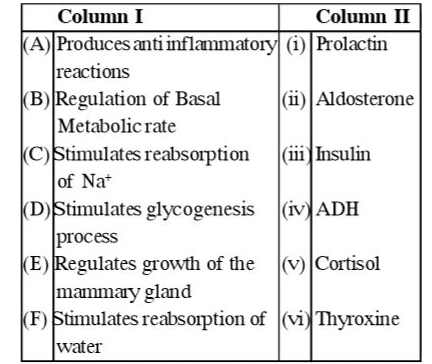How is a mature, functional insulin hormone different from its pro-hormone form?
To understand the differences between mature insulin and its pro-hormone form, we can break down the information into several key points:
1. Definition of Pro-hormone and Mature Insulin:
- Pro-hormone is the inactive precursor of a hormone. In the case of insulin, it is known as pro-insulin.
- Mature insulin is the active form of the hormone that regulates glucose levels in the blood.
2. Structure of Pro-insulin:
- Pro-insulin consists of three chains: the A chain, the B chain, and the C chain.
- The A and B chains are linked together by disulfide bonds, but the C chain is also present in this inactive form.
3. Conversion Process:
- The conversion from pro-insulin to mature insulin involves a process called maturation.
- During maturation, the C chain is cleaved (removed) from pro-insulin, resulting in the formation of mature insulin.
4. Structure of Mature Insulin:
- Mature insulin consists only of the A chain and the B chain.
- These two chains remain connected by disulfide linkages, which are crucial for the hormone's stability and function.
5. Function of Insulin:
- The primary role of mature insulin is to regulate blood glucose levels. When blood glucose levels rise, insulin is secreted to help lower them.
Summary of Differences:
- Pro-insulin: Contains A chain, B chain, and C chain; inactive form.
- Mature Insulin: Contains only A chain and B chain; active form after C chain removal.
- Pro-hormone is the inactive precursor of a hormone. In the case of insulin, it is known as pro-insulin.
- Mature insulin is the active form of the hormone that regulates glucose levels in the blood.
- Pro-insulin consists of three chains: the A chain, the B chain, and the C chain.
- The A and B chains are linked together by disulfide bonds, but the C chain is also present in this inactive form.
- The conversion from pro-insulin to mature insulin involves a process called maturation.
- During maturation, the C chain is cleaved (removed) from pro-insulin, resulting in the formation of mature insulin.
- Mature insulin consists only of the A chain and the B chain.
- These two chains remain connected by disulfide linkages, which are crucial for the hormone's stability and function.
- The primary role of mature insulin is to regulate blood glucose levels. When blood glucose levels rise, insulin is secreted to help lower them.
- Pro-insulin: Contains A chain, B chain, and C chain; inactive form.
- Mature Insulin: Contains only A chain and B chain; active form after C chain removal.
Topper's Solved these Questions
Similar Questions
The function of insulin hormone is :-
View SolutionThe function of glucagon hormone is
View SolutionWhich functions as gastric hormone
View SolutionMatch the function of hormone in column I with their hormone in column II
 View Solution
View SolutionWhich is not a function of thyroid hormone
View SolutionHormones differ from enzymes in that they are
View SolutionHow is mature insulin different from proinsulin secreted humans pancreas in human?
Explain how was human functional insulin produced using rDNA technology.
Why is the functional insulim thus produced considered better than the ones used earlier by diabetic patients?View SolutionThe function of ecdysone hormone in insect is
View SolutionSteroid hormones are derived from
View SolutionThe function of enterogasterone hormone is
View Solution
